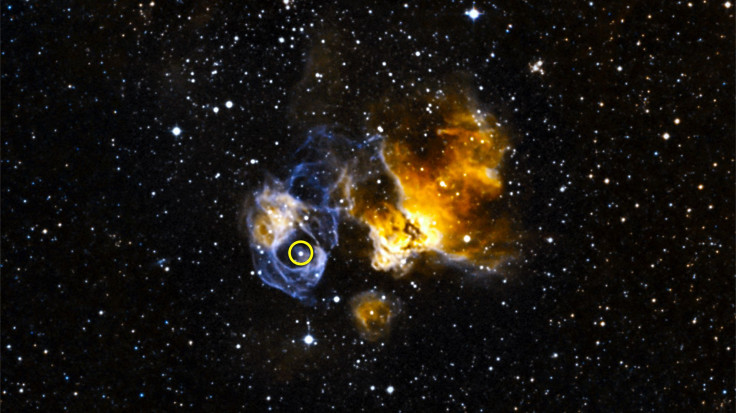NASA Finds Brightest Gamma-Ray Binary In Neighboring Galaxy

Gamma-ray binary is the name given to a system of two stars, one a normal star and the other either a neutron star or a black hole, whose radiative output is dominated by gamma-rays — the highest-energy form of light. These systems are rare, with only five of them having been found so far in the Milky Way.
Using data collected by the NASA’s Fermi Gamma-ray Space Telescope and other facilities, the space agency announced Thursday that “an international team of scientists has found the first gamma-ray binary in another galaxy and the most luminous one ever seen.”
It is located in a small nearby galaxy called the Large Magallanic Cloud, about 163,000 light-years away, and has been named LMC P3.
Lead researcher Robin Corbet at NASA’s Goddard Space Flight Center in Greenbelt, Maryland, explained the finding’s importance in a statement: “Fermi has detected only five of these systems in our own galaxy, so finding one so luminous and distant is quite exciting. Gamma-ray binaries are prized because the gamma-ray output changes significantly during each orbit and sometimes over longer time scales. This variation lets us study many of the emission processes common to other gamma-ray sources in unique detail.”
The system was first observed by NASA’s Chandra X-ray Observatory in 2012, but was classified as a high-mass X-ray binary (HMXB) at the time. Starting in 2015, Corbet and his team analyzed and collected fresh data on the LMC P3, observing it in X-rays with NASA’s Swift satellite, at radio wavelengths using the Australia Telescope Compact Array, as well as in visible light using both the 4.1-meter (13.45 feet) Southern Astrophysical Research Telescope in Chile and the 1.9-meter telescope in the South African Astronomical Observatory.
Based on their observations, LMC P3 was reclassified as a gamma-ray binary.
Jay Strader, a member of Corbet’s team and an astrophysicist at Michigan State University in East Lansing, said: “The [normal] star is between 25 and 40 times the sun’s mass, and if we’re viewing the system at an angle midway between face-on and edge-on, which seems most likely, its companion is a neutron star about twice the sun's mass.” However, if the viewing angle was almost face-on, the companion star would be a lot more massive black hole.
Before Fermi was launched, astronomers had expected to find a lot more gamma-ray binaries than they did. The hundreds of HMXBs that have been observed are thought to have originated as gamma-ray binaries.
A paper describing the discovery, titled “A luminous gamma-ray binary in the Large Magallanic Cloud,” will be published in the Astrophysical Journal on Oct. 1.
© Copyright IBTimes 2025. All rights reserved.




















